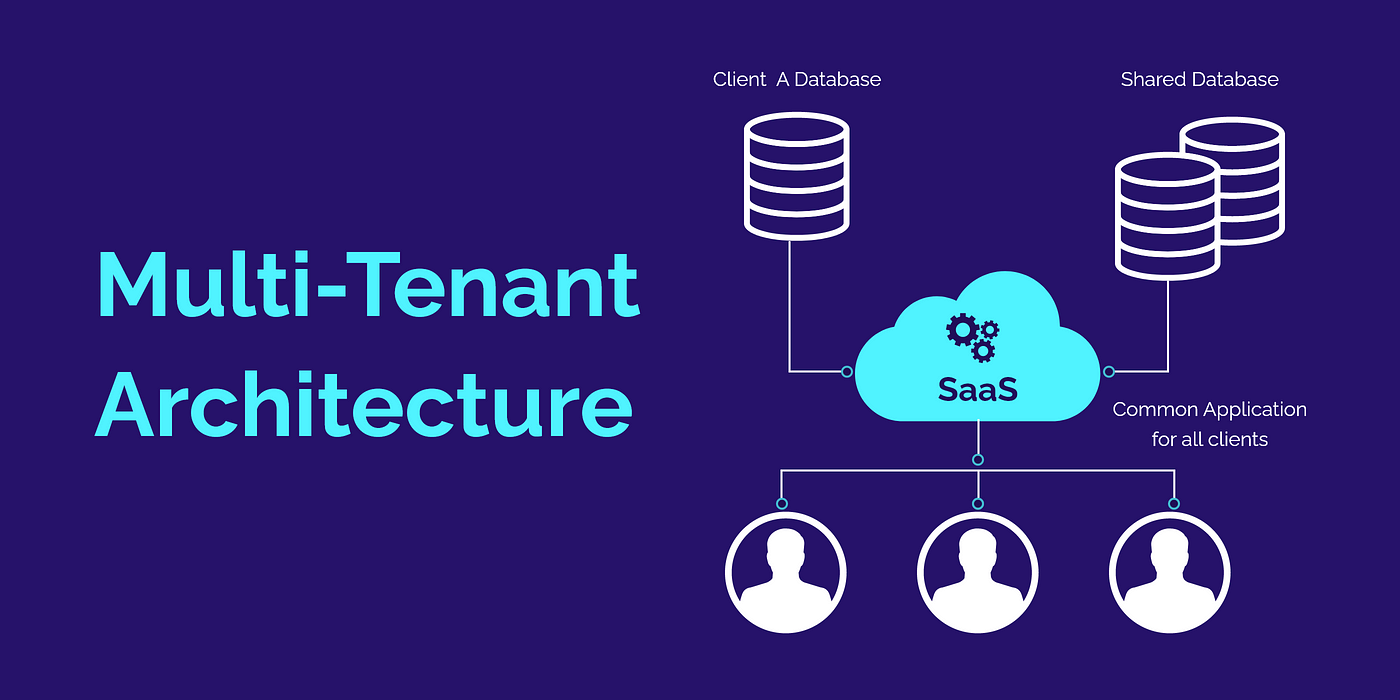Introduction: In the fast changing world of software development, multi-tenancy has emerged as a critical architectural framework. This method, which enables a single instance of software to serve several tenants or customers, has numerous benefits but also has considerable obstacles. This article examines the role of multi-tenancy in software development and the challenges developers encounter when building and managing such systems.
What is Multi-Tenancy?
Multi-tenancy is a software architecture where a single instance of an application serves multiple tenants. Each tenant operates as if they have their own isolated instance of the software, even though they share the same codebase and infrastructure. This is in contrast to single-tenancy, where each tenant has a separate instance of the application.
The Role of Multi-Tenancy in Software Development
Resource Efficiency: Multi-tenancy maximizes resource utilization by sharing infrastructure across multiple tenants. This leads to significant cost savings on hardware and maintenance, making it a preferred choice for many SaaS providers.
Scalability: With multi-tenancy, scaling up to accommodate more tenants can be more straightforward. Instead of deploying new instances for each tenant, developers can focus on scaling the underlying infrastructure, leading to more efficient scalability.
Simplified Maintenance and Upgrades: Maintaining a single codebase simplifies the process of deploying updates and bug fixes. Developers can roll out changes to all tenants simultaneously, ensuring consistent performance and reducing the risk of version discrepancies.
Customizability: While multi-tenancy centralizes the core application, it still allows for tenant-specific customizations. This flexibility is essential for catering to the unique needs of different clients without maintaining separate codebases.
Challenges Ahead in Multi-Tenancy
Data Isolation and Security: Ensuring that tenants’ data is properly isolated and secure is a major challenge. Developers must implement robust access controls and encryption mechanisms to prevent data breaches and unauthorized access.
Performance Management: Balancing the performance demands of multiple tenants can be tricky. A spike in usage by one tenant can potentially affect the performance for others. Effective resource allocation and performance monitoring tools are crucial to maintaining consistent performance across all tenants.
Complexity in Customization: While customization is possible, it adds a layer of complexity. Developers need to create a flexible architecture that supports tenant-specific features without compromising the integrity of the shared codebase.
Regulatory Compliance: Different tenants may operate in different regulatory environments, requiring the software to comply with various standards and regulations. Ensuring that the application meets these diverse requirements can be daunting.
Deployment and Rollback: Rolling out updates in a multi-tenant environment requires careful planning to avoid downtime and ensure compatibility across all tenants. Rollback mechanisms need to be robust to handle any issues that arise during deployment.
Best Practices for Implementing Multi-Tenancy
Design for Isolation: From the outset, design the architecture to ensure strict data isolation. Use separate databases or schemas for each tenant to prevent cross-tenant data leakage.
Automate Monitoring and Scaling: Implement automated monitoring tools to keep an eye on performance metrics and scale resources dynamically based on usage patterns. This helps in maintaining optimal performance and handling traffic spikes effectively.
Use Feature Toggles: Employ feature toggles to manage tenant-specific customizations. This allows developers to enable or disable features for specific tenants without affecting the entire codebase.
Adopt a Microservices Architecture: Consider using a microservices architecture to break down the application into smaller, manageable services. This can make it easier to handle tenant-specific requirements and scale individual components independently.
Regular Security Audits: Conduct regular security audits and vulnerability assessments to ensure that data isolation and security measures are up-to-date and effective.
Conclusion
Multi-tenancy offers substantial benefits in terms of resource efficiency, scalability, and simplified maintenance. However, it also presents challenges, particularly around data security, performance management, and regulatory compliance. By following best practices and continually refining their approach, developers can harness the power of multi-tenancy to deliver robust, scalable, and customizable software solutions. As the software development landscape continues to evolve, mastering multi-tenancy will be crucial for delivering competitive and high-performing applications.
FAQs on Multi-Tenancy in Software Development
What is multi-tenancy in software development?
Multi-tenancy is an architectural approach where a single instance of software serves multiple customers or tenants, each with isolated data and configurations.
What are the main benefits of multi-tenancy?
Multi-tenancy offers resource efficiency, scalability, simplified maintenance, and the ability to provide customized experiences for different tenants without maintaining multiple codebases.
What are the key challenges in implementing multi-tenancy?
The main challenges include ensuring data isolation and security, managing performance across tenants, handling complex customizations, complying with various regulations, and coordinating deployments and rollbacks.
How can data security be ensured in a multi-tenant architecture?
Data security can be ensured by implementing robust access controls, encryption, and using separate databases or schemas for each tenant to prevent data leakage.
What are some best practices for managing multi-tenancy effectively?
Best practices include designing for isolation, automating monitoring and scaling, using feature toggles, adopting a microservices architecture, and conducting regular security audits.


